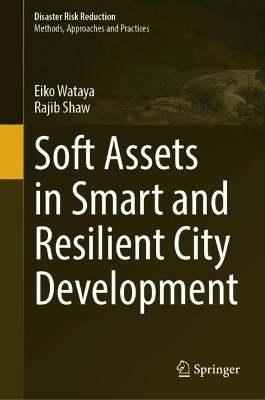Disaster Risk Reduction
1 total work
Soft Assets in Smart and Resilient City Development
by Eiko Wataya and Rajib Shaw
Over the past decade, building smarter, resilient cities is an established global trend in urban development, including developing countries. Unexpected external shocks, disasters and damage from climate change have major impacts on sustainable growth and well-being for citizens in today’s cities and requires comprehensive solutions. To deal with these negative events, cities predominantly invest in hard physical infrastructure, with less attention on non-physical soft assets which are intangible in nature and more difficult to quantify, but essential to achieve effective, balanced sustainable development. The value of soft assets can be substantial, and consistent implementation by cities can generate diverse value and be transformative for their urban development. For that purpose, cities need to establish an appropriate strategy, framework and structure to incorporate soft assets during the plan and implementation of hard infrastructure.
This book argues that integrating soft assets in smart, resilient city development is critical to make the hard infrastructure work effectively and create value for cities. The literature review underlines that soft capital can be defined as: 1) human, 2) institutional, 3) external, 4) technology and information, and 5) social. The book also examines how soft assets can be effectively integrated into and create value for smart, resilient city development. Based on previous findings and original research, a unique approach is adopted through the verification of different city-level approaches using the concept of influential nodes, showcasing layered and composite value creation. The analysis addresses innovative implementation factors which enhance disaster resilience and the environment, which is particularly relevant for cities in developing countries. Drawing on previous research, in-depth reviews, new data, and case studies, the book provides new insights and specific policy and action measures to enhance the utilization of soft asset components in parallel with hard infrastructure in smart and resilient city in developing countries.
